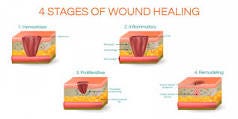Introduction: Advanced wound care has witnessed significant advancements in recent years, revolutionizing the treatment landscape for chronic wounds and injuries. With innovative technologies, novel therapies, and a deeper understanding of wound healing processes, healthcare professionals can now provide more effective and personalized care to patients. This article explores the latest developments in advanced wound care, highlighting their impact on healing outcomes and improving the quality of life for individuals with chronic wounds.
The global advanced wound care market size was valued at $10.3 billion in 2022, and is projected to reach $17.8 billion by 2032, growing at a CAGR of 5.6% from 2023 to 2032.

- Bioengineered Skin Substitutes: Bioengineered skin substitutes represent a promising approach in the treatment of complex wounds. These substitutes, often derived from human or animal cells, mimic the structure and function of natural skin, promoting tissue regeneration and wound closure. Recent advancements in tissue engineering techniques have led to the development of bioactive dressings that release growth factors and cytokines, accelerating the healing process and reducing the risk of infection.
- Negative Pressure Wound Therapy (NPWT): Negative pressure wound therapy has become a cornerstone in the management of challenging wounds, such as diabetic ulcers and pressure sores. This non-invasive technique involves the application of controlled negative pressure to the wound bed, promoting tissue perfusion, reducing edema, and stimulating granulation tissue formation. Innovations in NPWT devices have enhanced their portability, ease of use, and ability to deliver customized therapy based on individual patient needs.
- Advanced Dressings and Topical Agents: The development of advanced wound dressings and topical agents has expanded treatment options for various wound types. These products incorporate advanced materials such as hydrogels, foams, alginates, and silver nanoparticles, offering benefits such as moisture management, antibacterial properties, and pain relief. Furthermore, bioactive dressings infused with growth factors or antimicrobial agents contribute to faster healing and improved wound outcomes.
- Hyperbaric Oxygen Therapy (HBOT): Hyperbaric oxygen therapy involves the administration of 100% oxygen at increased atmospheric pressure, leading to enhanced oxygen delivery to tissues and improved wound healing. HBOT has demonstrated efficacy in treating conditions such as diabetic foot ulcers, radiation injuries, and non-healing wounds. Recent research focuses on optimizing treatment protocols, identifying patient selection criteria, and exploring synergies with other wound care modalities.
- Personalized Medicine and Digital Health Solutions: Advancements in personalized medicine and digital health technologies have transformed the delivery of wound care. Genetic profiling, biomarker analysis, and advanced imaging modalities enable clinicians to tailor treatment strategies to individual patient characteristics and wound profiles. Additionally, mobile applications, telemedicine platforms, and remote monitoring devices empower patients to actively participate in their wound care management, promoting adherence to treatment protocols and early detection of complications.
Conclusion: The field of advanced wound care continues to evolve rapidly, driven by innovation, research, and collaboration across multiple disciplines. By harnessing the power of bioengineering, advanced therapies, and digital health solutions, healthcare providers can address the complex needs of patients with chronic wounds, ultimately improving healing outcomes and enhancing their quality of life. As technology continues to advance, the future holds even greater promise for transforming the landscape of wound care and promoting healing for all individuals in need.
0 Comments